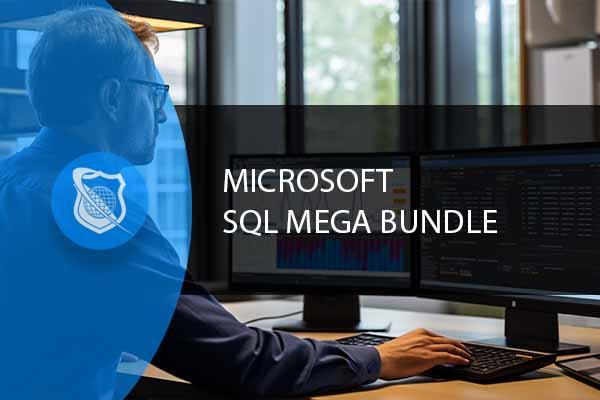SQL Server Analysis Services (SSAS) is a component of Microsoft SQL Server used for online analytical processing (OLAP) and data mining. It allows users to analyze data in a variety of ways, including creating and managing multidimensional structures called cubes, designing data mining models, and performing advanced analytics on large volumes of data. SSAS enables businesses to create comprehensive, scalable analytical solutions, facilitating better decision-making through the use of detailed and complex data analyses.
Associated Exams
- Exam Name: Analyzing Data with Microsoft Power BI
- Certification: Microsoft Certified: Data Analyst Associate
- Prerequisites: Familiarity with Microsoft SQL Server and basic knowledge of database concepts and OLAP.
Exam Costs
The cost to take an exam associated with SSAS, such as the Analyzing Data with Microsoft Power BI exam, typically ranges from $165 to $200 USD, depending on the country in which the exam is proctored.
Exam Objectives
- Understanding of data analysis and visualization concepts.
- Proficiency in using Power BI to model, visualize, and analyze data.
- Ability to connect to data sources, perform data transformations, and implement security standards.
Microsoft SQL Server Training Series – 16 Courses
Unlock your potential with our SQL Server training series! Dive into Microsoft’s cutting-edge database tech. Master administration, design, analytics, and more. Start your journey today!
Frequently Asked Questions Related to SSAS
What are the key features of SSAS?
SSAS offers powerful data modeling capabilities, enabling the creation of complex analytical models. Key features include multidimensional cube structures for deep data analysis, data mining for predictive analytics, and the ability to process and query large volumes of data efficiently.
How does SSAS integrate with other Microsoft technologies?
SSAS integrates seamlessly with other Microsoft technologies such as SQL Server for data storage, SQL Server Integration Services (SSIS) for data extraction, transformation, and loading (ETL) processes, and Microsoft Power BI for data visualization and reporting. This integration enhances the overall analytics and business intelligence (BI) capabilities of organizations.
Can SSAS be used for real-time data analysis?
Yes, SSAS can be configured for real-time data analysis using DirectQuery mode in the Tabular model or with Real-time OLAP for the Multidimensional model. These configurations allow SSAS to query data directly from the source systems without the need for pre-processing, enabling up-to-the-minute data analysis.
What are the differences between multidimensional and tabular models in SSAS?
The Multidimensional model, also known as OLAP cube, is optimized for complex queries and data analysis across multiple dimensions. It’s ideal for scenarios where data relationships are intricate. The Tabular model is a newer addition, optimized for performance and simplicity, using in-memory storage to speed up data retrieval. It’s suitable for simpler relational data scenarios.
How do you secure data in SSAS?
SSAS provides robust security features, including role-based access control (RBAC) to restrict access to data within the cubes or models. Administrators can define roles and assign permissions to users or groups, controlling who can access and manipulate the data. Additionally, SSAS supports data encryption and secure connections to further protect data integrity and privacy.
Key Term Knowledge Base: Key Terms Related to What Is SSAS?
Understanding the key terms related to SQL Server Analysis Services (SSAS) is crucial for professionals working in the field of data analysis and business intelligence. SSAS is a powerful tool for processing and analyzing large volumes of data. It helps in creating analytical models, performing complex calculations, and generating insights to support decision-making processes. Familiarity with its terminology not only enhances communication among team members but also improves the efficiency of developing and managing analytical solutions. Below is a list of key terms that are essential for anyone looking to work with or understand SSAS.
| Term | Definition |
|---|---|
| SSAS (SQL Server Analysis Services) | A component of Microsoft SQL Server used for online analytical processing (OLAP) and data mining, allowing for the creation of analytical models and conducting advanced analytics on large volumes of data. |
| OLAP (Online Analytical Processing) | A technology that organizes large business databases and supports complex analysis. It enables users to analyze data from multiple database systems at one time. |
| Data Mining | The process of discovering patterns and knowledge from large amounts of data. The data source could be databases, data warehouses, the internet, or other data repositories. |
| Cube | A multi-dimensional dataset that allows data to be modeled and viewed in multiple dimensions. It is composed of dimensions and measures. |
| Dimension | A structure that categorizes facts and measures in order to enable users to answer business questions. Commonly used dimensions are time, geography, and product. |
| Measure | A property on which calculations can be made. Examples include sales amount, sales quantity, and order count. |
| MDX (Multidimensional Expressions) | A query language for OLAP databases, much like SQL is a query language for relational databases. MDX is used to query and manipulate the data stored in OLAP cubes. |
| DAX (Data Analysis Expressions) | A formula language for analyzing data in various Microsoft products, including SSAS. It is primarily used in tabular models. |
| Tabular Model | A type of database model used in SSAS that stores data in tables rather than the multi-dimensional storage used by cubes. It is optimized for in-memory storage and rapid query processing. |
| Multidimensional Model | A type of database model that organizes data into multiple dimensions, and it is optimized for data warehousing and OLAP applications. |
| Data Warehouse | A central repository of integrated data from one or more disparate sources. It stores current and historical data in one single place that is used for creating analytical reports. |
| ETL (Extract, Transform, Load) | The process of extracting data from various sources, transforming it to fit operational needs, and loading it into a destination database or data warehouse. |
| Aggregation | The process of summarizing detailed data to a single or a few summary levels. It is used in data warehousing to improve query performance by pre-calculating expensive operations beforehand. |
| Partitioning | The process of dividing a database or its elements into distinct segments for improved management and performance. |
| KPI (Key Performance Indicator) | A measurable value that demonstrates how effectively a company is achieving key business objectives. KPIs are used in business intelligence to gauge the success of an organization in reaching targets. |
| BISM (BI Semantic Model) | A technology in SSAS that provides a single model for all BI capabilities and allows for the use of multidimensional and tabular models. |
| Data Model | An abstract model that organizes elements of data and standardizes how they relate to one another and to the properties of real-world entities. |
| Processing | The operation of loading data into an SSAS database. This includes calculations, aggregations, and data storage within the database. |
| Deployment | The process of distributing an application or database from one environment to another, such as from development to production. |
| Security Role | A set of permissions that can be assigned to users or groups. This determines access levels and permissions within an SSAS database. |
| Data Source | The location from which data that is being analyzed is sourced. This can include relational databases, flat files, web feeds, and other types. |
| Query Performance | A measure of how quickly a data retrieval operation can be completed. It is crucial in the context of large databases and complex queries. |
These terms form the foundation of SSAS and are essential for understanding how to work with and leverage SSAS for business intelligence and data analysis projects.

















